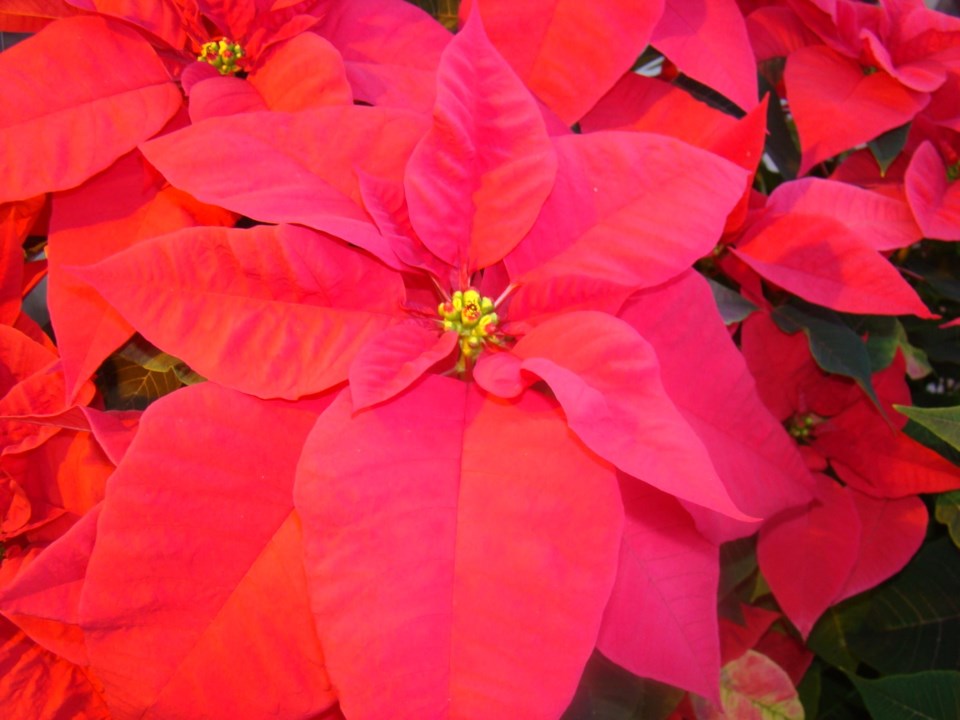YORKTON - It’s getting to that time of the season where certain plants are appearing in the stores…so you know, gardeners, that we had to have this ''Talk'.
This plant always brings up questions, so here it is, the inevitable Talk about the plant that announces Christmas like no other: the poinsettia.
The plant came to fame when a US minister to Mexico, Joel Roberts Poinsett, made horticultural history when he brought the plant to the US in 1825. The plant was known and appreciated by the Mexicans, because the plant grew wild there, a beautiful shrub, and was part of their everyday landscape. But Mr. Poinsett, a visitor to that fair country, was probably amazed at the stunning red and green leaves of this mystery plant. He brought it back to the States, and a star was born. I read that almost 100 million poinsettias are sold from mid-November till Christmas in the US. And of course now there are over 100 varieties, that go beyond the traditional red and green: creamy white, coral, lime green, purple, and variegated varieties.
If you are gifted with a poinsettia, the question always comes up of how to care for them. We have to remember that they came from a warm climate, part of the euphorbia family, so they like a lot of sun and a moderate temperature but will not care for a spot in our homes where they might get caught in a cool draft. They don’t mind it a bit cooler at night. We should water our poinsettia when the soil feels dry, a good reminder to us that watering a plant does not stick to a schedule of a certain time on a certain day. We should check them and water them when they need it. We should water it well, but make sure the water drains: they don’t like wet feet. If we overwater, our poinsettia will let us know it is unhappy by dropping leaves.
Intrepid gardeners might try to keep the plant and have it bloom again. I’ve read various instructions in various books on how to do this. It is possible, but it is a long process that sounds like a lot of work for a plant that will look out of place in July. I know gardeners love a challenge, and if you are one of them, you might enjoy the challenge of just keeping the plant going, whether it blooms or not.
Speaking of blooms, because of the bright coloring of the leaves, we always assume that these are ‘blooms’ on the plant. But they are not flowers. The colored parts of the plant are in fact leaves, and the little yellow structures at the centre of each bract are actually the flowers.
Here’s an interesting factoid: to get the bracts to change color, they require long periods of darkness, 14 hours a day for at least six weeks. (It makes the challenge of getting them to bloom again even more daunting!) This is called ‘photoperiodism’ and I once read a gardener’s account of her attempts with her poinsettia; she was sure that even the lights from passing cars through her living room window at night affected the blooming process!
Another factoid: the poinsettia is not toxic to people or pets. It was thought so for many years, but it is now known that it is not toxic, although contact with the sap may cause itchy skin, and some people do have allergy problems with poinsettias.
And one more: poinsettia is pronounced “poyn-set-ah”. In spite of the “I” at the end, it is not part of the pronunciation.
So there’s our Talk about the poinsettia! Some love the plant, some do not. But it certainly is a holiday favorite for many! Thank you to our friends at YTW for their work. Visit the hort society at www.yorktonhort.ca and have a great week!






